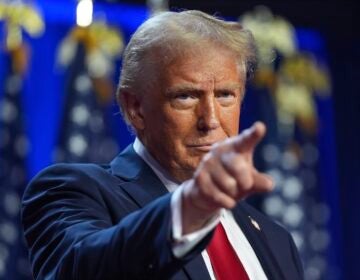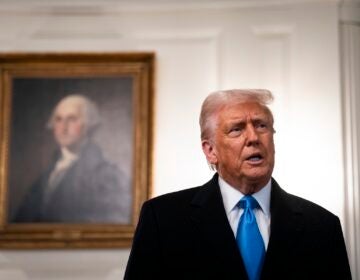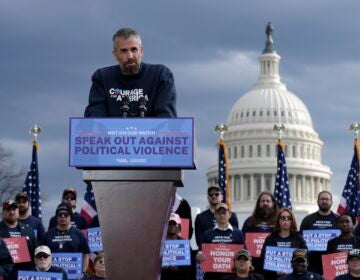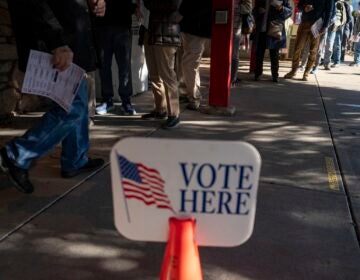How has the Electoral College survived, despite being perennially unpopular?
Despite its substantial-sounding name, the Electoral College isn’t a permanent body: It’s more of a process. For decades, a majority of Americans have wanted it to be changed.
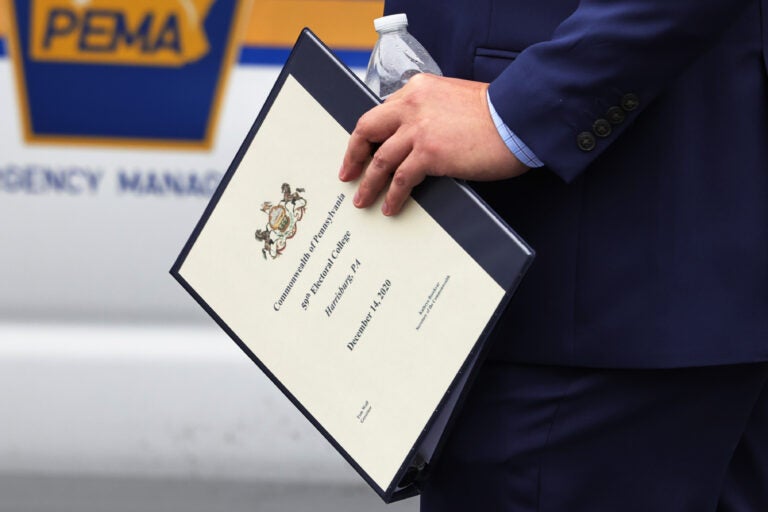
A Pennsylvania state elector casts his vote in the 2020 presidential election in Harrisburg on Dec. 14, 2020. (Michael M. Santiago/Getty Images)
This story originally appeared on NPR.
Every presidential election cycle, constitutional law expert Alison LaCroix can count on people asking her one question when they learn what she does for a living.
“Why do we have the Electoral College?” she says she’s asked – again and again. “It’s good news in terms of people being aware that it exists,” says LaCroix, who teaches law and history at the University of Chicago, “but bad news in the sense that people feel like, ‘Why does it exist, and is it useful?’”
A majority of Americans — more than 60% — support abolishing the Electoral College, according to a September report by the Pew Research Center. But the system has survived an unprecedented number of attempts to change it.
“There have been more proposals for Constitutional amendments on changing the Electoral College than on any other subject,” according to the National Archives, citing more than 700 efforts to dismantle the process.
Backers of the Electoral College idea say the system balances power among large and small states, brings stability, and is an obstacle to demagogues. But critics call the Electoral College an indirect process that’s undemocratic and rooted in racism. It’s also the reason we have swing states.
“From the perspective of 2024, you know, it doesn’t seem ‘small-d’ democratic to have this sort of intermediate body between the people voting and the ultimate decision,” says LaCroix, who has written a historical analysis of the U.S. Constitution.
Here’s a quick guide:
How does the Electoral College work?
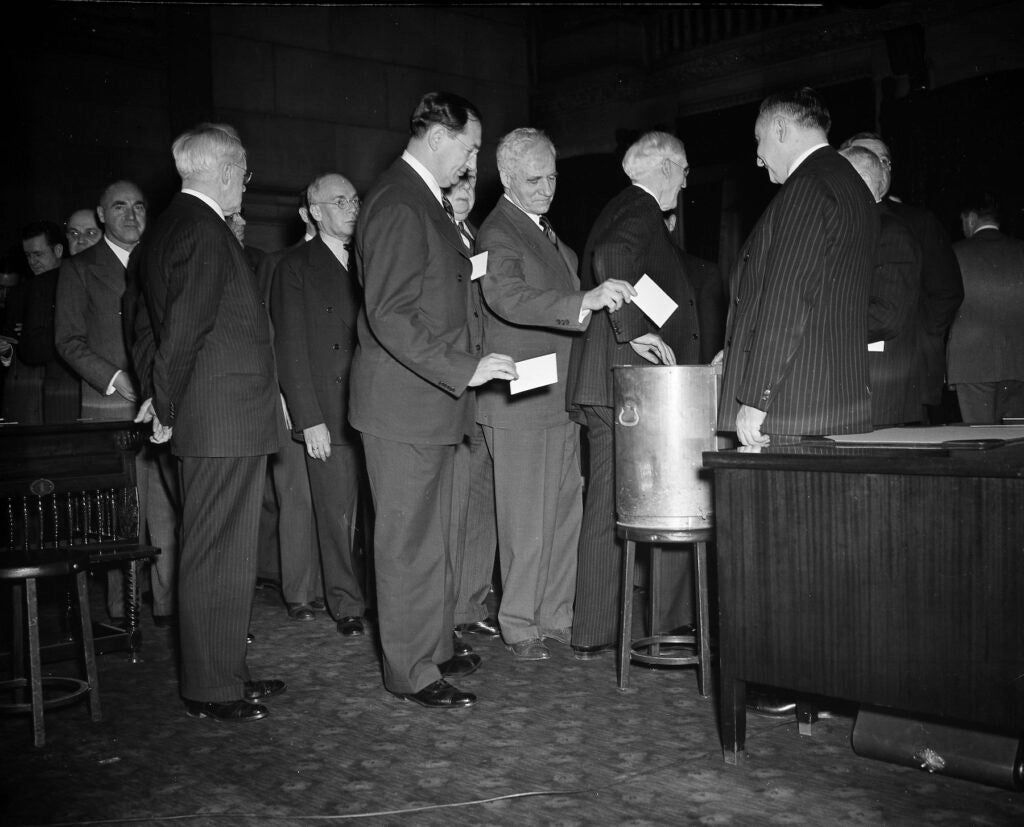
“When voters cast their ballots for a candidate for president of the United States, they are actually voting for the presidential electors who were selected by that candidate’s party,” according to the National Conference of State Legislatures.
On ballots around the country, names like “Donald Trump” and “Kamala Harris” actually represent slates of electors — members of the Electoral College who are pledged to vote for that candidate.
There are 538 members of the Electoral College nationwide: one for each state’s members of Congress, and three more for the District of Columbia. That’s where the presidential election’s famous number comes from: The candidate with at least 270 electoral votes (a majority) wins. As we’ve seen in some previous elections, that candidate doesn’t have to win the popular vote.
Despite its substantial-sounding name, the Electoral College is neither a place nor a permanent body: It’s more of a process. In each state, political parties designate their own slate of potential electors before the November general election.
Nearly every state and the District of Columbia have a winner-take-all policy, meaning only those electors tied to a candidate who won the popular vote in their state will send their ballots to the Capitol. Maine and Nebraska divide the ballots, giving two “at-large” electoral votes to the state’s overall winner but also one for each congressional district won.
The electors then gather in mid-December to cast their votes for president and vice president, sending the results to Congress.
Congress then certifies the votes, on Jan. 6. If there’s a tie, the House of Representatives would hold a contingent election to choose the president.
A presidential candidate can win the Electoral College vote but lose the popular vote: it happened in 2016 and 2000, and several times in the 1800s.
Who are the Electors?
In most states, the two main parties choose slates of potential electors either at their conventions or by committee votes. They’re often people who play prominent roles in state government or are longstanding party members.
Each state’s legislature determines how electors are chosen — but there are two main restrictions: They can’t be federal government workers; and they can’t be members of Congress.
Federal law doesn’t require electors to vote in a way that reflects that results in their state, but 37 states have laws requiring them to do so, according to the NCSL. The organization says the 2016 election saw seven “faithless” electors — including five Democratic electors who refused to cast their votes for Hillary Clinton — the most since 1972.
Despite their power, electors’ identities aren’t usually widely known outside of their state. Unlike members of Congress, there isn’t a centralized list of all the states’ electors, according to the Office of the Federal Register.
The Framers opted against a popular vote
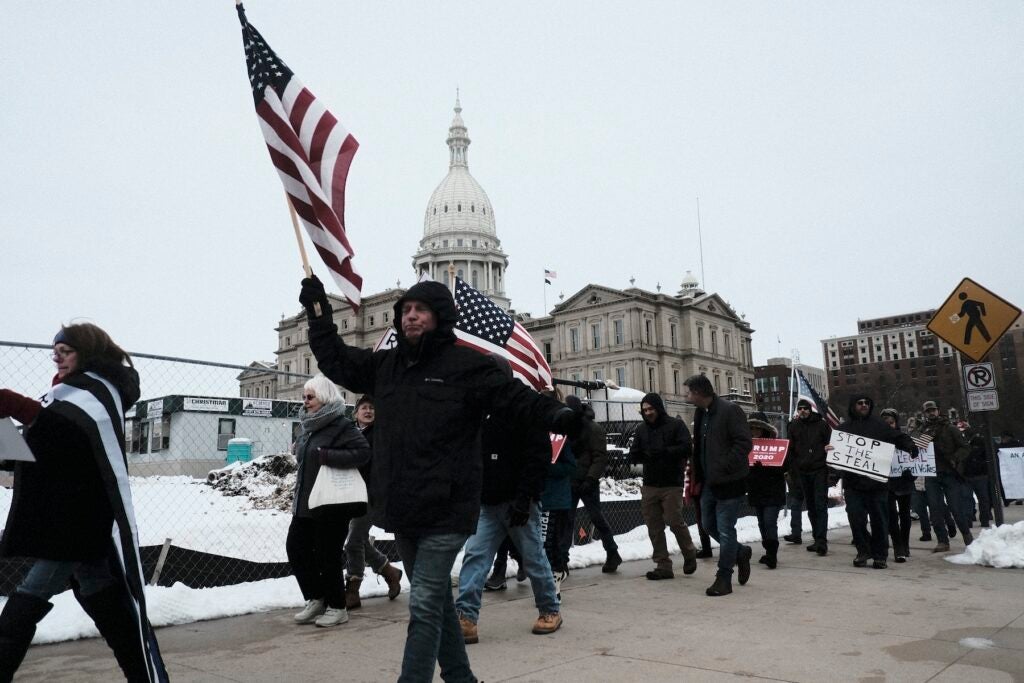
The country’s framers saw the Electoral College as a way to balance a lot of competing motivations, from the separation of federal powers to states not wanting to cede power, to concerns of unequal power between the states due to population differences (and for some, not wanting to risk losing slavery). LaCroix says even at the time, in the 1780s when this decision was made at the Constitutional Convention in Philadelphia, the delegates chose “an unusual body.”
The Constitution’s framers were also dubious about a popular vote, concerned on one hand that the country was too large for the public to make an informed choice on a leader — and on the other, that a direct system could help a demagogue rise to power.
They also considered, but dismissed, the idea of having Congress choose the president, similar to Great Britain’s parliamentary system. But at the Convention, Gouverneur Morris — who argued for a popular vote — warned that if the legislature picked the president, “it will be the work of intrigue, of cabal, and of faction.”
But some Convention attendees also believed candidates would likely fail to gain national support outside their region, leaving Congress to decide the presidency.
“And then they say, well, what about an intermediate body, which becomes the Electoral College,” LaCroix says.“[It] solves the problem of the president being too beholden to Congress. It’s a temporary body. It’s not some entity that has ongoing power. And they thought that was appealing.”
A further sign of the Electoral College’s ephemeral nature: The term isn’t mentioned in the Constitution.
Why do some call the Electoral College a relic of racism?
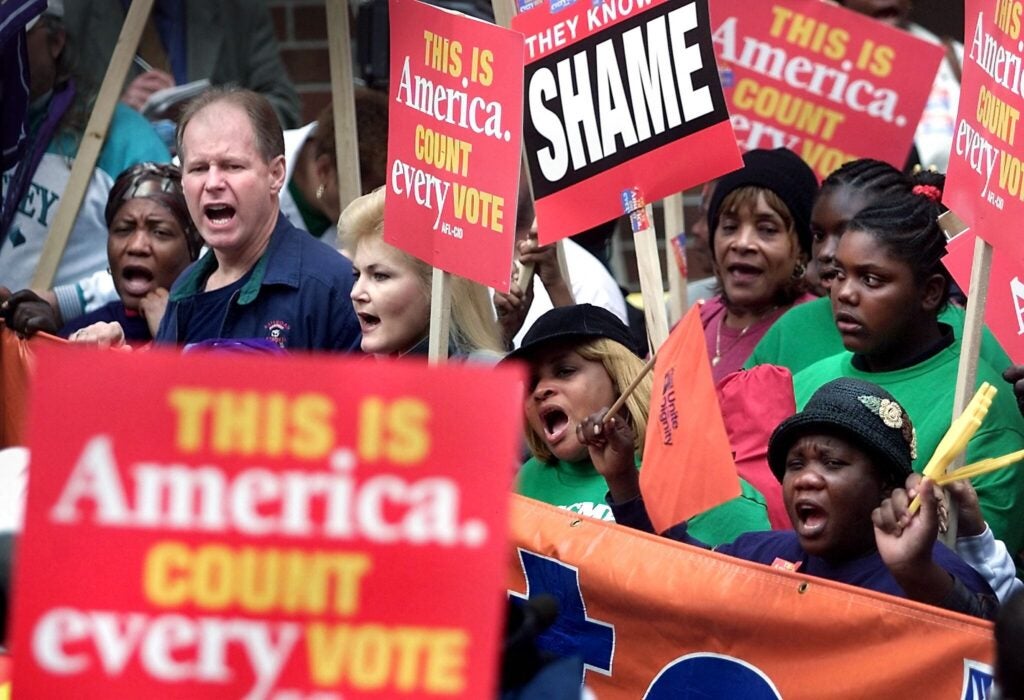
(Tim Sloan/AFP)
At the Convention, Southern states successfully argued for using enslaved people’s population numbers to bolster their power in Congress, claiming that each slave should be counted as 3/5 of a person — but not have the right to vote — when calculating representation.
The House overwhelmingly voted to abolish the Electoral College in 1969
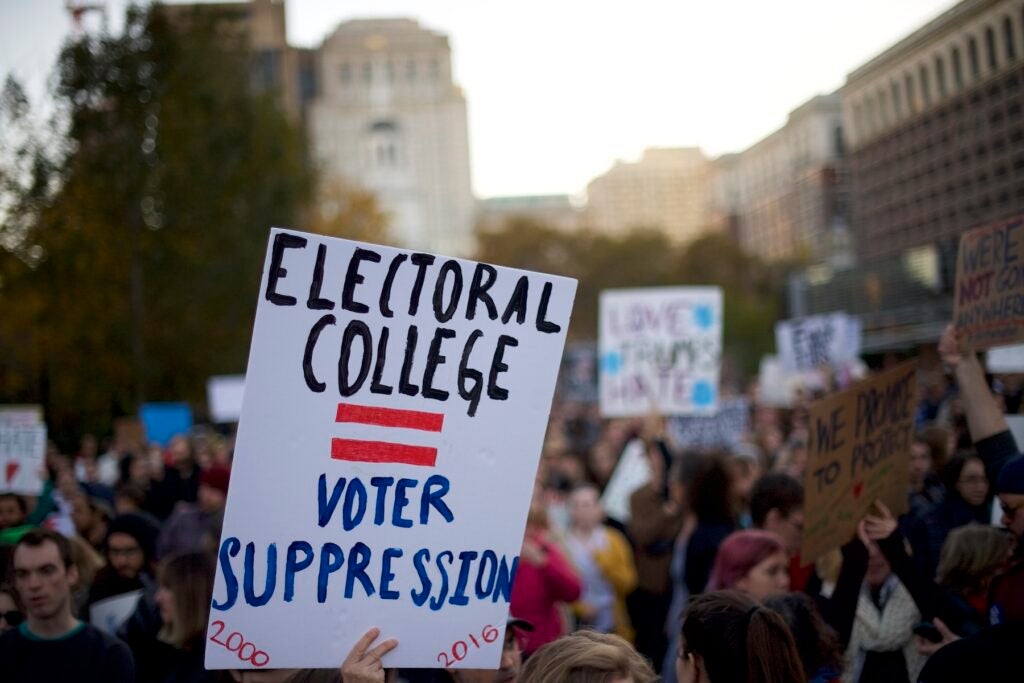
Going back more than 50 years, a majority of voters have supported doing away with the Electoral College.
“Public opinion polls have shown Americans favored abolishing it by majorities of 58 percent in 1967; 81 percent in 1968; and 75 percent in 1981,” according to the National Archives.
Momentum to replace the Electoral College got a boost in 1968, when Richard Nixon notched a razor-thin win of the popular vote — after earlier concerns that segregationist George Wallace’s third-party candidacy might siphon enough electoral votes to prevent a clear majority.
Sen. Birch Bayh led a push to amend the Constitution, and in September of 1969, the House voted 339–70 to adopt the measure. But the amendment languished in the Senate.
“Led by Southern senators but helped by some very conservative Midwestern Republicans, the proposal is defeated by a filibuster,” as Harvard Kennedy School professor Alex Keyssar told NPR’s Throughline ahead of the 2020 election.
Segregationists weren’t the only ones who wanted to preserve the Electoral College. Some Black leaders, such as Vernon Jordan, argued in the 1970s that Black voters could wield political power as “swing” election deciders. But many of those leaders later opted to support a popular vote.
There’s an ongoing debate over whether to replace the Electoral College
The college’s supporters include the conservative Heritage Foundation, which says it prevents presidential candidates from focusing only on winning votes from high-population and urban areas, thus addressing “the Founders’ fears of a ‘tyranny of the majority,” according to its website.
The Heritage Foundation also says the Electoral College tends to magnify the margin of victory, imparting a mandate to govern; and “has the added benefit of eschewing radical candidates for more moderate ones.”
Even experts who want change also warn that some of the impacts could be unpredictable.
For instance, Akhil Reed Amar, a law professor at Yale University, told NPR’s Throughline that running a new, national direct election would bring complications — from what central federal authority oversees it to how to get 50 states to agree on the rules.
But, Amar added, “Here’s my best argument for why we should have reform: equality. One person, one vote. Each person’s vote should count the same…. One person, one vote is a powerful affirmation of equality.”
In the face of high federal hurdles such as a Constitutional amendment, there is a push for change at the state level.
Under the National Popular Vote Interstate Compact, states adopt legislation requiring them to award their electors’ votes to whichever presidential candidate wins the popular vote nationwide. The mechanism would kick in once enough states join the compact to decide a presidential election.
As of this year, National Popular Vote legislation has become law in 17 states and DC, reflecting 209 electoral votes. In 2023, Minnesota Gov. Tim Walz signed his state’s version of the National Popular Vote Interstate Compact. This year, Maine also joined the group.
The legislation “has also passed at least one legislative chamber in 7 states possessing 74 electoral votes (Arkansas, Arizona, Michigan, North Carolina, Nevada, Oklahoma, Virginia),” according to the National Popular Vote website.
The compact needs to add states holding 61 more electoral votes to trigger the change.
WHYY is your source for fact-based, in-depth journalism and information. As a nonprofit organization, we rely on financial support from readers like you. Please give today.


